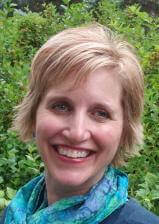So You Want to Write Books for Children? (Part 1)
Is writing for children on your long-term bucket list, or did you just recently acquire the itch? Either way, these tips from guest author Mary Hertz Scarbrough will help you get started on the path to becoming a children’s writer.
 After the umpteenth time reading a favorite book to an excited child, every parent or educator at some point thinks to themselves: “I can do this. How hard can in be?”
After the umpteenth time reading a favorite book to an excited child, every parent or educator at some point thinks to themselves: “I can do this. How hard can in be?”
Answer: It’s much harder than it looks.
But if you’ve been itching to start a career as a children’s author, I have 7 tips to help get you and your imagination started:
Tip #1: Read, Read, and Then Read Some More
Reading – it’s the easiest, yet most effective, thing you can do to launch your children’s writing career. This might seem like the second most obvious piece of advice (the most obvious one is below), but many aspiring authors skip right past this step. This is not only a disservice to your goals, it’s also a surefire way to miss hours of enjoyment.
Do you want to write picture books (PBs)? Get to the library or a bookstore and amass a towering stack of them. Read old classics and new ones; read anything that you can get your hands on.
The same rules apply if you want to write for older kids – middle grade (MG) or young adult (YA). If you don’t know where to start, ask a children’s librarian or a teacher for recommendations. Prepare to come away with a long list – a passionate children’s book lover will be thrilled to talk your ear off.
Read indiscriminately and widely. Don’t just choose books you think you will like. If you dislike a bestseller, try to figure out why it’s so popular. Read nonfiction, even if you’re adamant you only want to write fiction, and vice versa.
Newbery winner Linda Sue Park has said that she read more than 1,000 middle-grade novels before even beginning to write her first novel – or, more importantly – submitting it to publishers. That may sound daunting, but of course, most children’s books are much shorter than books for adults. Moreover, you don’t need to read hundreds of books before you write anything. Just realize that the more you read, the better your writing is likely to become.
Read kids’ magazines, too. While away the occasional afternoon or evening with a stack of them at your library. Writing for children’s magazines has provided the first published clip for many aspiring children’s authors. While you’re at the library, pick up some books on the craft of writing, too.
Reading comes with a caveat: Spend lots of time reading, but don’t let it become a vehicle for procrastination. To become a children’s writer, always remember you have to write – thus leading to the most obvious piece of advice…
Tip #2: Start Writing
Writers have to write, right? But for many writers – dare I say most – this is hard. Is a really mouthy internal censor holding you back? You’re not alone. Shut it up by getting so busy writing that she or he can’t get a word in edgewise. Time, or the distinct lack thereof, is another villain.
Just write. Every day. Or, if that truly is unrealistic, schedule it several times a week. Let me repeat – put writing time on your calendar. Be realistic, however. Much as I like the idea of it, I don’t get up at 4 a.m. to write.
Make your writing habit as much of a habit as flossing daily (which you do, right?). To look at it another way, if you need to undergo surgery or you’re building your dream home, you’ll look for experts to accomplish these tasks. Practice makes perfect with any job, including writing.
Schedule BIC time. That’s butt-in-chair, and it’s the only way to become a writer (unless you have a standing workstation, like me). BIC time means turning off those distractions, whether it be Facebook, Twitter, or the siren call of undone laundry. (Laundry and I are BFFs when I need to procrastinate.)
If you have children at home, BIC time might entail allowing your kids the rare treat of a video or swapping childcare with a friend. You might need to escape one night a week to a local coffeehouse or your library. Figure out what will work for you right now; 6 months down the road you may need a fresh approach.
Don’t think you have to schedule huge blocks of time. Rare is the person who has this luxury. Train yourself to write whenever you can steal a moment. No matter how impossible this seems, keep working at it. Even if you only write a sentence a day, after a month you could finish a draft of a picture book.
Schedule BIC time. That’s butt-in-chair, and it’s the only way to become a writer. BIC time means turning off those distractions, whether it be Facebook, Twitter, or the siren call of undone laundry.
I hear a lot of “buts” out there. But what should you write? You have this desire, but don’t have a clue what you want to write. Don’t try to eat the entire cake, have just a bite for starters.
Write a character sketch. Page through a magazine until you find a picture of a child or teen. What are this boy’s favorite foods? How would he describe the smell and taste of those foods? What does he do for fun? Who is his best friend? Does he even have friends? Why or why not? What kind of home life does he have? What worries keep him awake at night?
Tip #3: Find Like-Minded Writers
Hey, we’re well into the 21st century, so it doesn’t matter if you reside in the boondocks (as I do). Read author’s blogs. Join children’s writers’ listservs. Lurk. Absorb. Try not to immediately jump in and ask the obvious questions – e.g., how do I get published? Instead, search the listserv’s archives for loads of great information.
Spend time on the Internet and its many wonderful offerings. As with reading, however, don’t let this self-education prevent you from actually writing.
For tips 4-7 of this series, check out So You Want to Write Books for Children? (Part 2)

